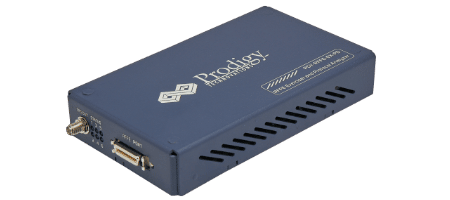
5G in the Internet of Things (IoT)
Fast growing IoT market
The Internet of Things allows many applications of technologies from other areas of technology, such as the mobile sector. The most important property of IoT devices is the ability to exchange data over the Internet. A corresponding radio link is essential for this requirement. There are numerous wireless technologies that can be used. However, none is as suitable as the new 5G cellular standard. Developers of 5G IoT designs benefit from numerous advantages and the future security of the new wireless standard. More than 100 billion IoT objects are expected to be in operation by 2022. This means a tremendous amount of work and pressure for RF / microwave engineers to quickly design and build 5G and IoT products to compete for a market share.
Benefits of 5G in the Internet of Things (IoT)
5G is not just seeing an increase in speed. Compared to the evolution of the previous versions (3G, LTE), the network of the future can do even more. It can be seen as a revolution in the field of cellular communications. For the first time, the focus is not on smartphones or end devices. Instead, 5G relies on the networking of digital end devices. Billions of devices will be able to communicate with us. The increase in speed is just one of the advantages and it is actually impressive in the 5G network. The new 5G Internet is 100 and 1,000 times higher than the Internet via 3G (UMTS) and 4G (LTE). Under optimal conditions, the data transfer rate via the new mobile broadband is up to 20 Gbit / s.
Another important aspect that makes 5G interesting for IoT is data transmission in almost real time. The technical term here is latency. The lower the latency, the better for the application. Because an application with low latency can react faster. A typical application example where low latency is required would be autonomous driving. With 5G, one speaks of a latency of 1 millisecond. In the LTE network, the latency is significantly higher at around 50 to 80 milliseconds.
Radio front end control interface
RFFE provides fast, agile, semi-automatic and comprehensive control of the complex RF subsystem environment, which has strict performance requirements and can include up to 19 components per bus instance (up to 15 slave devices and up to four master devices) including power supply, amplifiers, LNAs , Antenna tuners, filters and switches.
The interface can be applied to the full range of RF front-end components to simplify product design, configuration and integration and to facilitate the interoperability of components supplied by different vendors. The convenience makes it easy for RF equipment vendors, baseband and transceiver vendors, and mobile OEMs to meet end-user demands for faster data speeds and better call quality, develop scalable solutions, and accelerate time-to-market for new designs in mobile and automotive . Industrial and Internet of Things (IoT).
New adapted version of RFFE for 5G IoT applications
The current version, MIPI RFFE v3.0, is designed to provide the more accurate timing precision and reduced latencies required to advance the 5G rollout worldwide. The new version optimizes and optimizes the interface to enable faster and more dynamic configuration changes within and between RFFE subsystems and to provide the specific functions required for frequency range 1 (FR1) of conventional sub-6 GHz cellular bands.
RF bands for uplink and downlink communications have multiplied in 5G, and subcarrier spacing (SCS) windows between RF packets have narrowed. MIPI RFFE v3.0 meets these requirements of the 3GPP 5G standard by providing advanced trigger functions and functions for synchronizing and scheduling changes in register settings, either within a slave device or across multiple devices:
- Timed Triggers - Allows for closer, synchronized timing of multiple aggregation configurations for carriers
- Assignable Triggers - Enable remapping of groups of control functions










